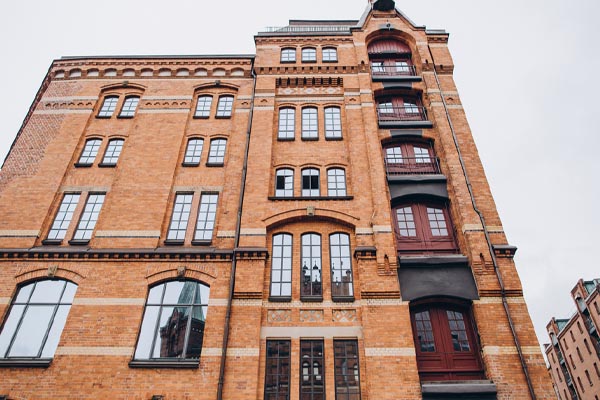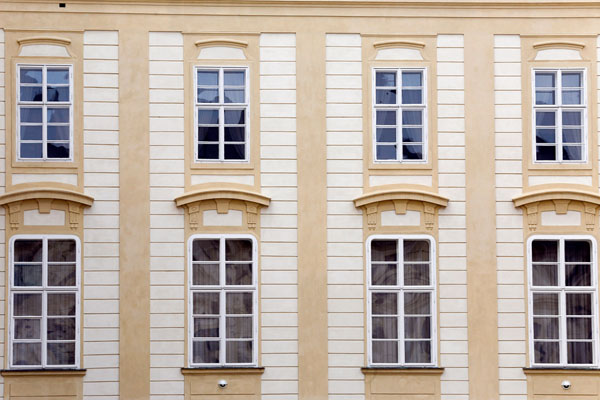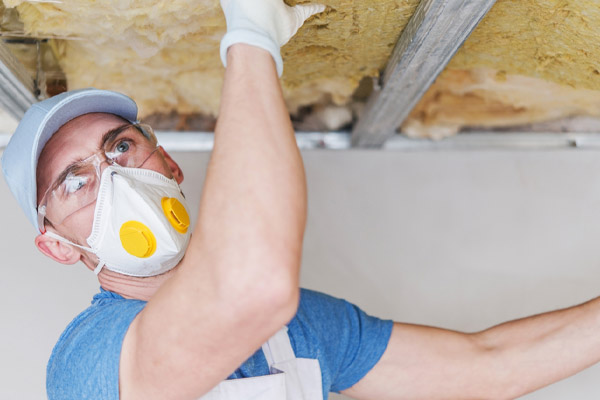Insulating Historical Buildings: Challenges and Solutions

Preserving the historical charm of buildings while keeping them energy efficient is a delicate balance that demands attention. In this guide, we delve into the importance of retaining architectural heritage while reducing energy loss. As we navigate the intricate landscape of insulation, we will unravel the challenges of incorporating modern insulation for historic buildings. From maintaining aesthetic integrity to addressing moisture concerns, we will explore the multifaceted challenges of insulating historic buildings. We will discuss potential solutions, from adaptive insulation techniques to harmonizing historical authenticity with contemporary sustainability goals.
The Significance of Historical Buildings
Contents [hide]
Historical buildings have profound cultural, aesthetic, and educational importance. They serve as tangible links to our past. They offer glimpses into the eras, cultures, and architectural styles that shaped our societies. These buildings stand as living history. They foster connections with our heritage and enrich our collective identity. However, the preservation of historical buildings faces the challenge of balancing their intrinsic value with the need for energy efficiency in the modern world.
Preserving these architectural treasures is not solely about safeguarding their physical forms; it is about upholding the stories they tell and the emotions they evoke. While achieving energy efficiency in the face of climate concerns is imperative, it must be achieved without compromising their unique character and authenticity. The intricate dance between conserving historical significance and enhancing energy efficiency requires innovative strategies that respect both past and present.
Related Article: The Environmental Impact of Proper Insulation: A Closer Look
The Importance of Upgrading Insulation for Historic Buildings

Enhancing the insulation of historic buildings brings about a range of benefits that resonate with both financial savings and environmental concerns. By boosting energy efficiency, these upgrades lead to substantial cost savings in HVAC expenses. The less you rely on energy sources, the less your environmental footprint.
Improved insulation plays a pivotal role in the preservation of historic structures. Upgraded insulation helps combat dampness, condensation, and other potential structural hazards that can destroy the building’s integrity over time. Curbing moisture-related issues increases the life of the buildings. It also safeguards the building’s cultural and historical significance for generations to come.
Modern insulation strategies contribute to increased indoor comfort levels. Using effective insulation materials and techniques helps maintain a more stable indoor temperature. It eliminates discomfort caused by drafts and temperature fluctuations. As historical buildings transform to become more energy efficient, they also evolve into spaces where occupants can enjoy a heightened sense of comfort, regardless of the external climate conditions.
Challenges in Insulating Historical Buildings

- Respect for Original Architecture: Preserving the original design and materials while integrating modern insulation techniques presents a complex balance. Adapting modern solutions to older architectural aesthetics demands careful consideration to prevent compromising the building’s unique character.
- Material Compatibility: Historical structures often feature construction materials that differ from modern counterparts. This can hinder the seamless integration of contemporary insulation materials, potentially leading to damage or deterioration. Material compatibility requires a nuanced approach to make sure insulation does not harm the building’s structural integrity.
- Regulatory Constraints: Regulations and local codes safeguard the historical integrity of these buildings. They also pose challenges when implementing insulation upgrades. Navigating the web of rules regarding modifications to historical buildings can limit the scope of available insulation options. It requires innovative solutions that adhere to preservation guidelines.
- Budget Constraints: Insulating historical buildings comes with financial considerations beyond conventional projects. The need for specialized techniques and materials tailored to the unique demands of these structures can escalate costs. Balancing budget constraints while striving for effective insulation requires creative planning and a clear understanding of the investment’s long-term benefits.
Innovative Solutions for Historical Building Insulation
Below, we discuss some modern insulating applications for historical buildings.
Related Article: Does Spray Foam Damage Roof Shingles?
Modern Techniques for Traditional Materials
Introducing creative approaches to insulating traditional building materials is crucial. Leveraging contemporary methods that harmonize with historical aesthetics is vital. There are proven techniques and strategies that are effective. For example, using aerogel-infused plaster or lime-based insulations has successfully preserved both form and function.
Sustainable and Energy-Efficient Insulation
There are significant benefits and advantages to evaluating the importance of sustainable and energy-efficient insulation solutions. They go beyond environmental benefits. They impact long-term energy consumption and indoor comfort. Adapting such solutions to suit historical buildings involves creative planning, blending the latest advancements with the structure’s distinctive requirements.
Related Article: Important Insulation Information When Buying a House In Fort Collins
The Role of Technology in Insulation for Historical Buildings
The transformative role of technology in insulation projects is seen through advanced tools like 3D imaging and AI. These digital tools bring several advantages:
- Prices Planning: Modern tools like 3D imaging help us understand the building better before making changes, so we can plan carefully and avoid mistakes.
- Preservation: Technology helps us choose the right insulation methods that will not harm the old parts of the building, preserving its original beauty and structure.
- Efficiency: Smart technology allows us to use energy-efficient materials and techniques. It reduces energy use and environmental impact.
- Cost-Effectiveness: Technology can help us find the best solutions without wasting time and resources. It can make the insulation project more cost-effective.
- Accuracy: Advanced tools ensure that insulation is applied accurately, reducing the chances of errors. It can guarantee optimal results.
- Adaptability: Technology allows us to tailor insulation solutions to the unique needs of each historic building. It guarantees energy efficiency without compromising its historical value.
- Longevity: Insulation done with modern technology can contribute to the building’s longevity by protecting it from dampness, condensation, and other potential issues.
- Documentation: Digital technology allows us to document the entire insulation process, which can be valuable for future maintenance and preservation efforts.
- Sustainability: Using technology to insulate historic buildings aligns with sustainable practices, making sure these structures last for generations while being environmentally friendly.
Related Article: Injection Foam Insulation vs. Spray Foam Insulation: What’s the Difference?
Conclusion
Preserving the heritage and embracing sustainability in insulating historical buildings is a challenging task. It is hard to match classic design and architecture to modern materials and techniques. However, it can be done with modern technology, special materials, and smart planning.
Related Article: What Is Thermal Bridging In Colorado Homes?
Insulation for Historic Buildings In Fort Collins, Colorado
If you are considering air sealing or upgrading your home’s insulation, it is best to seek professional guidance. However, not all professionals offer the same level of quality and pricing. Always make sure you work with the best professionals available in your area. Fortunately, residents of Fort Collins and nearby areas can turn to Ascend Construction for top-notch service.
At Ascend Construction, we specialize in insulation removal and installation, air sealing, energy conservation, energy audits, whole-house fan installations, and more. We’re confident that our service will go above and beyond your expectations.

For a free consultation with our experts, get in touch with Ascend Construction today. Our team can offer practical solutions to address any problem areas in your Fort Collins home, along with affordable pricing and high-quality work. All of the work that we perform is backed by a satisfaction guarantee. Click here to contact us, or call us using the button below. We offer free, no-obligation, in-home consultations.
Ascend Construction
301 S Howes St #1241